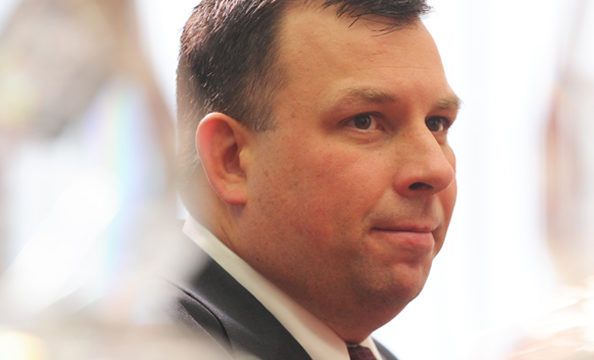Small and mid-cap companies “generally pay 7% higher tax, on average, than large caps do,” as large caps more often have access to cross-border tools that can lower their tax rates, Rivers told FSA during a recent visit to Hong Kong.
In addition, as one of the effects of the tax bill, large companies are expected to bring much of their overseas cash onshore. “This is going to create a stronger M&A environment in the next couple of years, which, again, will disproportionately benefit small caps,” Rivers said.
However, the full effects of the tax bill should become visible no earlier than in 2019, he added.
Smaller companies tend to be domestically-focused, have a couple of core products and usually are in growth areas, so they may generate higher returns, which lead to an increase in operating margins. Therefore, in principle, their earnings grow both thanks to higher revenues and expanding margins, which large-cap companies find hard to do.
The risk, however, is if the global economy outpaces the US. Then the more domestically-oriented smaller and mid-companies would not benefit as much from it as large caps, which tend to have more international exposure.
“After many years of a bull market, we begin to worry about valuation,” Rivers said. While the valuations of small and mid-caps are higher than those of large-caps, they have outpaced large-caps in earnings growth and are expected to continue to do so in 2019, he added.
Sectors and process
Rivers manages the JO Hambro US Small Mid Cap Equity Fund, together with senior fund managers Thorsten Becker and Arun Daniel, who run it without analyst support.
“Each of the three portfolio managers has experience in specific industries,” he said. They also differ in investment approach.
Rivers covers product-driven sectors, such as technology, telecoms and healthcare. Becker’s experience is in value-driven sectors: Financials, energy, materials and utilities. Daniel, who has had a prior career in senior management at Walt Disney, covers the consumer and industrial sectors.
He believes the differentiation helps the managers look at sectors that have different drivers of return.
While the three managers use different lenses to look at their sectors, the investment decisions are made collectively.
The fund’s benchmark is the Russell 2500 Index, which extends the US small cap stocks universe into the mid-cap territory. The fund currently holds 50 positions, with a target range between 45 and 60.
The fund does not use a screening tool to whittle down the investable universe. Instead, Rivers attends industry conferences, meets with industry experts, private companies and private equity firms, in order to develop a sense of what is going on in the industry, and then use that knowledge to focus his research into companies.
In this sense, the investment process is a combination of a top-down and bottom-up approach, based on identification of industry trends. Sectors are not targeted, but are purely an outcome of the bottom-up analysis.
The management team generally owns stocks with a market cap between $1bn and $10bn, but has some leeway to go outside those limits. It aims to hold positions for two-to-three years, with a turnover around 60%.
As the fund does not take macro-economic bets, its main risk comes from stock selection.
Analysis of macro risks is part of stock analysis and the portfolio construction process, which aims to minimise the tilts to factors such as oil prices or interest rates.
One of the themes Rivers follows is the opioid crisis in the US. He has a position in Pacira Pharmaceuticals, the manufacturer of the non-opioid post-surgery anaesthetic drug Exparel. Although the company’s stock is currently below the price at which Rivers bought it, “due to execution of FDA studies and sales and marketing,” the product has so much to speak for it, including doctors’ opinions, that he has decided to be patient and to wait for it to recover.
It doesn’t always work out, however. Another of Rivers’s ideas, a 2015 bet on communication equipment stocks went sour as AT&T and Chinese companies slowed down spending, forcing him to exit at a loss.
“There were still opportunities for this company to grow better than expectation, but the market trend was just too powerful,” Rivers said.
JO Hambro US Small Mid Cap Equity Fund vs benchmark and category average


















